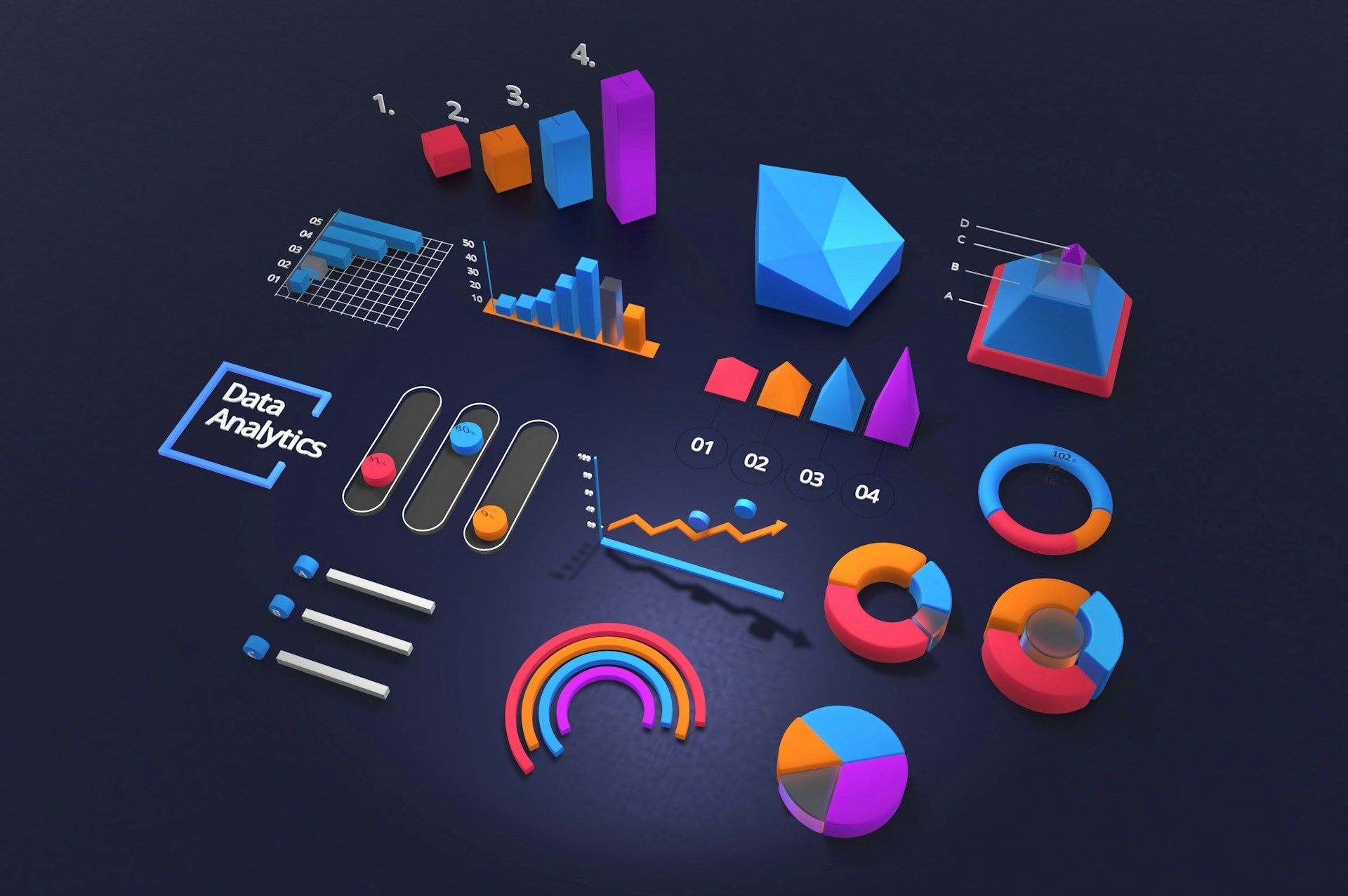I
Introduction
Oftentimes, data in various operational systems is fragmented; hence, managers frequently make judgments based on incomplete information. However, a data warehouse overcomes this challenge by obtaining, combining, and arranging important operational data in a way that is timely, consistent, dependable, and easily accessible, wherever and whenever needed.

Essentially, the word “data warehouse” dates back to a time before computers were extensively utilised. The primary goal of data warehousing in the early 1900s was to create trends that would assist business users in making well-informed decisions. This was accomplished primarily through manual means.
Presently, organisations, both public and private, are constantly gathering knowledge, data, and information at an ever-increasing rate and storing it in computerised systems. Often, it gets quite difficult to maintain and use the data and information, particularly when scaling problems occur. Furthermore, as network access, particularly the Internet, becomes more dependable and accessible, the number of people who require access to information keeps growing.
Working with various databases, whether or not they are integrated in a data warehouse, has become a very challenging operation that requires a great deal of experience. However, the advantages of doing so might greatly outweigh the costs. In this article, we will simplify the meaning of a data warehouse and how nonprofits can create a low-cost option for their programs and activities.
II
A Data Warehouse and Its Characteristics
In simple terms, a data warehouse (DW) is a collection of data created to assist in decision-making. It also serves as a store for both historical and current data that managers across the organisation may find useful. Analytical processing activities, such as online analytical processing (OLAP), data mining, querying, reporting, and other decision support applications, typically require data to be formatted in a way that makes it accessible.

Also, a data warehouse can be defined as an integrated, time-variant, subject-oriented, nonvolatile collection of data used to aid in management decision-making.
Data warehousing is frequently introduced by highlighting its core features:
- Subject-oriented: Only information pertinent to decision support is included in the data, which is arranged by specific subject, such as sales, items, or customers. Subject orientation allows users to ascertain not only the performance of their nonprofit but also the reasons behind it. A more thorough understanding of the organisation is offered by subject orientation.
- Integrated: Subject orientation is intimately linked to integration. Data from many sources must be arranged consistently in a data warehouse. Likewise, they must address name conflicts and disparities across units of measure to accomplish this. Complete integration is assumed for a data warehouse.
- Time variant: Historical information is kept in a storehouse. In this case, unless the system is real-time, the data may not always give the current state. Essentially, they find patterns, variances, and long-term connections for comparisons and forecasting, which helps with decision-making. The temporal quality of every data warehouse is unique. Every data warehouse needs to include time as the primary dimension. There are several time points in the data for analysis from various sources (e.g., daily, weekly, and monthly views).
- Not volatile. Lastly, users cannot edit or modify data once it has been submitted to a data warehouse. Whereas changes are documented as new data, obsolete data is destroyed. These features make it possible to configure data warehouses primarily for data access.
Other traits that could be present include the following:
- Internet-based: The main purpose of data warehouses is to give web-based applications an effective computing environment.
- Relational and multifaceted: Relational or multidimensional structures are used in data warehouses.
- Client-server: A data warehouse gives end users convenient access through the use of the client/server architecture.
- In real time: Data-access and analysis capabilities are available in real-time, or active, data warehouses.
- Comprises metadata: The metadata (data about data) in a data warehouse describes how the data are arranged and used efficiently.
All in all, a data warehouse is a location where data is kept, while data warehousing is the process itself. The discipline of data warehousing produces applications that enable quick access to organisational data, generate insight, and enhance decision-making. The three primary categories of data warehouses are data marts, operational data stores (ODS), and enterprise data warehouses (EDW).
IV
Effective Steps to Building a Data Warehouse
In this section, we will outline the processes that nonprofits can adopt in building a low-cost data warehouse.

1. Establish a Clear Purpose
Firstly, before considering any tools or software, ask yourself, What do we want to learn from our data? You may wish to:
- Keep track of how many individuals are being reached by your programs.
- Assess results in relation to grant objectives.
- Know how to retain donors.
- Track project expenses and results.
To begin with, jot down your top three inquiries. These will dictate your warehouse’s layout and the type of data you gather. For example, let’s imagine your organisation offers children after-school programs. You may inquire:
- How many kids came every month?
- Which programs drew the most participants?
- For each pupil, how much did we spend?
2. Bring Together Your Current Data Sources
With nonprofits, data is frequently dispersed over multiple locations. List all of the places where your information is currently kept. For donor data, it may be Excel, Google Sheets, or fundraising platforms (like Donorbox or Bloomerang). For program data, it may be Google Forms, surveys, or manual logs. Financial data sources may include QuickBooks, Excel, or accounting tools, and Beneficiary data comprises Paper forms, spreadsheets, or CRM tools.
Everything doesn’t have to be spotless at first. Simply note who is in charge of the data and where it is located.
3. Opt for an Affordable Platform
Thirdly, nonprofits can construct a basic warehouse using strong, reasonably priced tools. Here are some simple places to start:
| Tool | What It Does | Cost |
| Google BigQuery | Stores large amounts of data and connects with Google Sheets | Free for small use |
| Google Sheets | Collects or cleans data before uploading | Free |
| Looker Studio (Google Data Studio) | Turns your data into charts and dashboards | Free |
| Airtable or Notion | Acts as an easy database for small teams | Free / Low cost |
| AWS (Amazon Web Services) | Offers cloud storage with free credits for nonprofits | Discounted via AWS Imagine Grant |
| Microsoft Azure for Nonprofits | Data storage and analysis with discounts | Discounted licenses |
All in all, the best low-cost combination for beginners is:
➡️ Google Sheets → BigQuery → Looker Studio.
It doesn’t require coding, is easy to use, and is free for small NGOs.
4. Connect Your Data (ETL Simplified)
ETL is a fancy phrase that means:
- Extract: Gather information from many sources, such as forms, Excel, and your CRM.
- Transform: Make it consistent by cleaning it up (for example, using “Yes/No” rather than “Y/N”).
- Load: Upload it to your data warehouse (such as BigQuery).
To automatically extract data from Sheets or Forms, use Google Apps Script. To transfer data between platforms, use Zapier (which is inexpensive) or Airbyte (which is open-source). You can also manually upload your monthly cleaned spreadsheets. Doing this by hand helps you establish a routine. Furthermore, you don’t require sophisticated automation right away.
5. Develop a Basic Data Model
The term “data model” simply refers to the arrangement of your data. Basically, it can be compared to a family tree.
- Donors fund events or programs.
- Programs reach beneficiaries.
- Activities are undertaken by beneficiaries.
- Every action has expenses and results.
For nonprofits, this is a basic layout:
Table: What It Stores
Donors Names, donations, frequency
Programs Program name, start date, budget
Beneficiaries Demographics, participation, outcomes
Grants Source, amount, purpose, duration
Transactions Expenses, disbursements, receipts
By linking these tables, such as connecting “Donor → Program → Beneficiary”, you can easily see how funding turns into impact.
6. Create reports and dashboards
One of the most exciting parts is transforming numbers into narratives. To do this, leverage Looker Studio, Power BI, or Metabase to produce visuals like:
- Donors over time
- The program’s beneficiaries
- Spending plan versus results attained
Also, avoid overcomplication. After you have two or three charts that address your main questions, you can expand later.
7. Preserve and Guard Your Data
Furthermore, data is important, but it needs to be treated with caution. Some of the best practices to adopt include:
- Save backups weekly using Dropbox or Google Drive.
- Only provide access to reliable employees.
- Make use of two-factor authentication and secure passwords.
- Maintain a basic “data guide” that explains the contents and location of each file.
Also, if you handle sensitive data (such as donor or beneficiary information), ensure your storage conforms with local data protection laws or privacy regulations like the GDPR.
8. Develop Culture and Competencies
The true strength of a data warehouse lies in how your employees use it, not in the program itself. Hence, encourage your staff to acquire a foundational understanding of data. Also, in program meetings, discuss data and pose the question, “What does the data say?” You can also leverage the use of dashboards when reporting to funders and partners.
9. Expand Slowly
Lastly, you can expand your warehouse gradually to include new sources of data, such as SMS survey results or social media metrics. To automatically verify grant recipients or funders, you can integrate APIs such as the Pactman Nonprofit Checkplus API. Also, to forecast trends, like which donors are most likely to make additional donations, you can use AI tools. All in all, start small, pick up ideas along the way, then expand on what works.
Conclusion
In order to maintain adequate efficiency and productivity, a data warehouse requires strict monitoring because of its ability to grow into an enormous size and its inherent characteristics. Over the past few decades, data warehousing has grown significantly in the field of information technology, and the evidence from the BI/BA and Big Data domains indicates that the field’s significance will only increase. Organisations that efficiently design and utilise data warehouses will get a clear competitive advantage.


